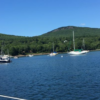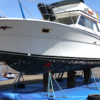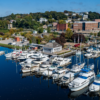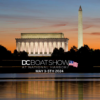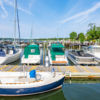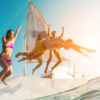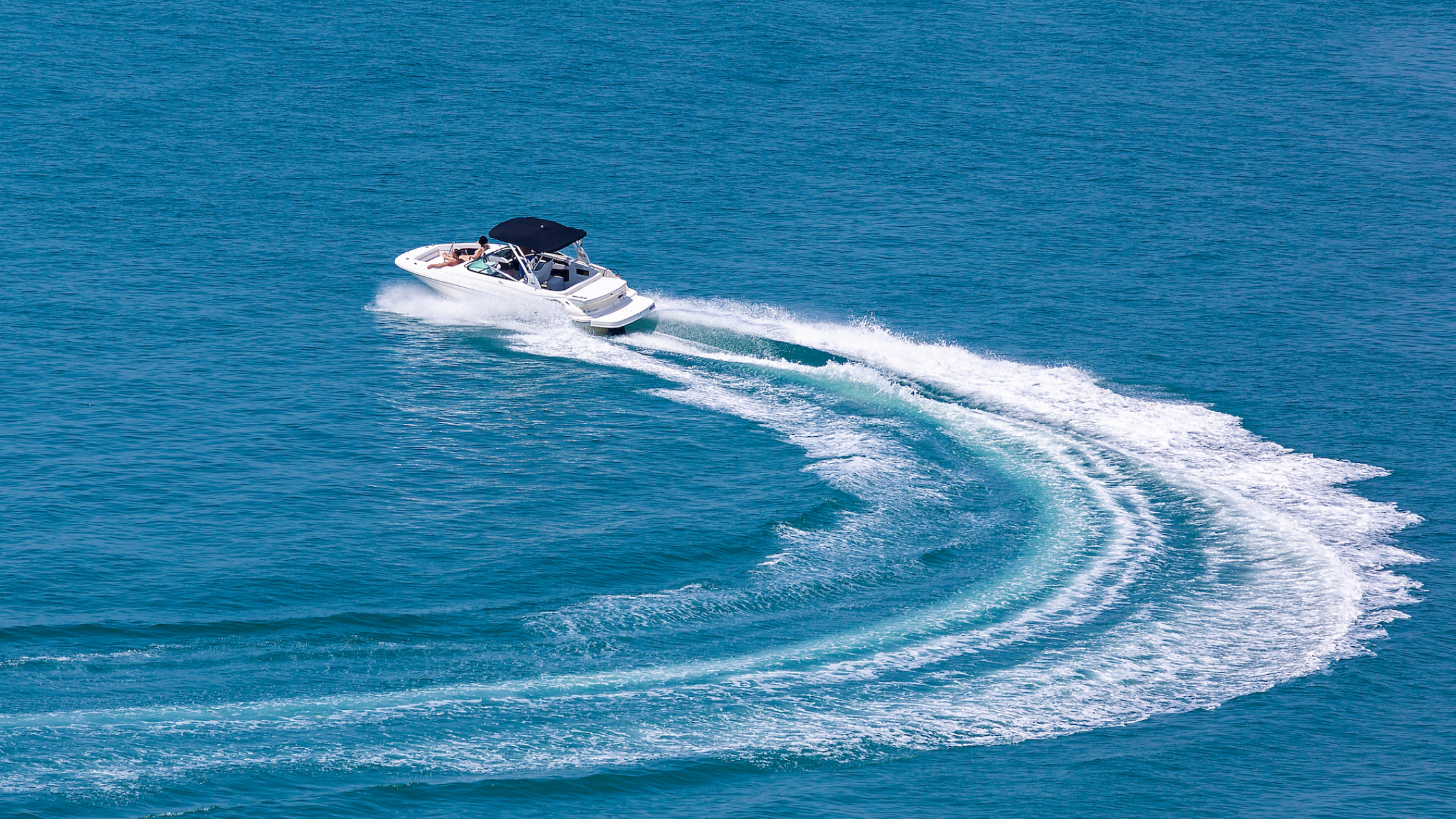
There are dozens of kinds of motorboats on the water today with sub-segments in each major category and literally hundreds of brands and models. They differ by hull shape, deck layout and use. Let’s take a look.
Fishing boats
Fishing boats can be designed for either fresh or saltwater use and run the gamut in terms of size, propulsion, design and equipment.
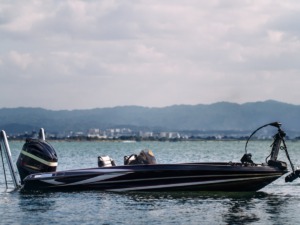
Bass boat on a lake | Credit battler on Shutterstock
Bass boats: Aluminum bass boats are primarily used for freshwater fishing. With a V-hull and low freeboard (hull sides) they are used on lakes and rivers and are powered by outboard motors to get up on plane quickly.
Bay boats: Usually built of fiberglass because they’re used in salt or brackish water, bay boats are designed for the shallows.
Flats boats: With very shallow drafts and flat bottoms, flats boats run 14-20 feet in length and are generally powered by an outboard motor.
Center console boats: These boats have an open “walk around” concept to help anglers move about easily when they have a fish on. These designs have planing hulls and are powered by one or multiple outboard engines.
Jon boats: Small utility boats designed for shallow water, Jon boats can be made of aluminum or fiberglass. They’re inexpensive and good for beginners.
Skiff boats: Similar to Jon boats, skiffs are good for shallow water and may be driven by an outboard. They can also be rowed.
Sportfishers: Sportfishers have open cockpits used to fight fish and sometimes are called “battle wagons”. Most have deep-V hulls with flatter aft sections so they can get on plane quickly and they come in a variety of sizes.
Family day boats
Family fun boats for lakes, rivers or the coast are used for various activities from fishing to towing and weekending to entertaining.
Bowriders: With an open seating area in the bow ahead of the helm, bowriders are powered by outboard engines or sterndrives.
Dual console boats: With twin dashboards and two sections of windshield, dual console boats have a walkthrough to the bow sunpad or seating area.
Cuddy cabin boats: With a small cabin forward, cuddy boats can accommodate a bed and/or a toilet. They can be used for fishing, family fun or limited overnighting.
Deck boats: Deck boats have a flat deck with plenty of seating space. They can be aluminum or fiberglass, have outboard or sterndrive propulsion and are used for family fun or fishing.
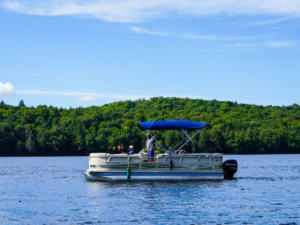
Pontoon Boat | Credit Leonard Zhukovsky on Shutterstock
Pontoon boats: Similar to deck boats in their intended purpose, pontoon boats have two or three hulls usually made of aluminum and are powered by outboards. Very stable and beamy (wide), pontoon boats are great for entertaining on lakes and rivers.
Runabout boats: Runabouts can be used for fishing, cruising, watersports or as tenders to larger yachts. They’re typically outboard-powered and 15-30 feet in length.
Jet boats: Powered by jet drives rather than propellers, jet boats are usually under 30 feet and are very maneuverable. They can get into shallow water and are usually used for water sports.
Towboats/Sport boats: Wakeboarding, waterskiing and wake surfing boats are designed for water sports and have powerful inboard engines. Some towboats can be ballasted differently to create large wakes for wakeboarding or wakesurfing. Some towboats are tournament-rated, which means they’re used in competition.
Power cruisers and motor yachts
Motor yachts are variously sized powerboats with one to three engines and luxurious accommodations for extended overnighting.
Pilothouse boats: With enclosed helms ahead of the living space, pilothouse boats are designed to run in rough seas, are powered by inboard engines, and have cabins on the lower deck. They may have an open flybridge with a second helm station above.
Sedan bridge boats: Designed for longer voyages, sedan boats tend to run 35-70 feet. The helm is usually inside but elevated for better visibility forward.
Downeast cruisers: More of a design statement than a use description, Downeast boats were developed in New England and are also called lobster boats. They can be used for day boating, entertaining or cruising and usually have accommodations for overnighting.
Trawlers: Trawlers take their name from old commercial fishing boats but today they’re slow, fuel-efficient, displacement boats for distance cruising under power. They can be well appointed and luxurious.
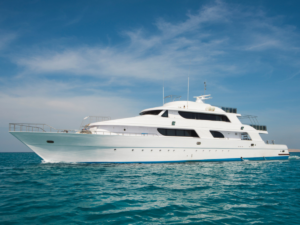
Luxury Motor Yacht | Credit Paul Vinten on Shutterstock
Power catamarans: Powercats have twin hulls and can be large distance cruisers or smaller fishing craft. They’re stable and roomy and usually more fuel-efficient and faster than monohulls of comparable length.
Cabin cruisers: Any larger boat with full accommodations can be considered a cabin cruiser or coastal cruiser. These boats are well-equipped including having air conditioning, generators, galleys and more. Lengths vary but hover around 40-70 feet.
Superyachts: Large and luxurious, superyachts (also megayachs) are often in excess of 100 feet and are professionally crewed.
Tenders/RIBS: Most commuter dinghies are rigid inflatables (RIBs) which means they have inflatable tubes with rigid bottoms and they’re lighter and more buoyant. They’re powered by outboard engines and often used as tenders to a larger yacht.
Miscellaneous powerboats
This last category captures many powerboats that don’t fit any categorization above.
High performance boats: High performance boats are built for speed (and racing) and can be 25-60+ feet. Propulsion can be inboard or outboard.
Houseboats: Houseboats are floating houses that can be 25-100+ feet. They have full, home-style accommodations and function more like barges than boats. Some houseboats are motorized and can be rented on lakes and rivers for a week of pseudo-camping.
Personal watercraft: PWCs are technically boats especially since they’ve become larger, heavier and more feature rich. They can carry one to four people and can run in excess of 60 mph with their jet drives.
Blurring design lines
Today there’s a convergence in boat uses so many designs are being asked to do double and triple duty. Fishing boats now have more seating and outdoor galleys for entertaining, motor yachts can be draped in rod holders to go angling, and dinghies are tenders and sport boats at the same time. One boat can’t be all things to all people, but most boats can make the majority of boaters happy.



